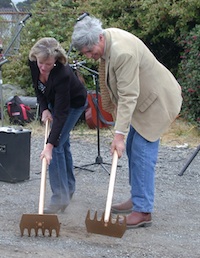County contractor to pay $320,000 for wetland dumping
6/1/12
Humboldt County contractor Dennis Wendt of Wendt Construction resolved a federal lawsuit today with the Environmental Protection Agency and Department of Justice following the construction company’s unpermitted dumping of the equivalent of 200 large dump truck loads of material into federally protected wetlands crucial to neighboring salmon populations.
According to an EPA news release, the illegal fill activities took place between 2005 and 2008 at two Fortuna development sites — the Strongs Creek Plaza Site and the East Littlefield Property — and impacted four acres of wetlands. Wendt Construction will pay a $170,000 penalty for dumping fill material into wetlands connected to Strongs Creek, a tributary to the Eel River.
As part of the settlement, the company will spend an additional $150,000 on a multi-year project to restore the damaged wetlands, including the creation of a vegetated pond that will support wildlife.
Restoration will allow the creek to provide movement corridors for wildlife and habitat for the northern redlegged frog, a threatened species in California.
The wetlands are associated with Strongs Creek, which flows approximately 1.3 miles west to the Eel River, a resource for maintaining cold, freshwater habitat for salmon and steelhead. The Lower Eel River is considered impaired under the Clean Water Act due to excessive sediment loads, low dissolved oxygen and high temperatures, according to the press release.
The Clean Water Act protects the nation’s coasts, rivers, lakes, streams, and wetlands, which are vital to the protection of human health and the environment. The act requires anyone who proposes to fill and alter protected waterways, including wetlands, to first obtain a permit from the U.S. Army Corps of Engineers.
The proposed consent decree for the settlement is subject to a 30-day comment period and final court approval. A copy of the proposed decree is available on the Justice Department website online at www.justice.gov/ enrd/Consent_Decrees.html.
See also EPA Dings Fortuna Construction Firm More Than $300,000 for Wetlands Dumping



